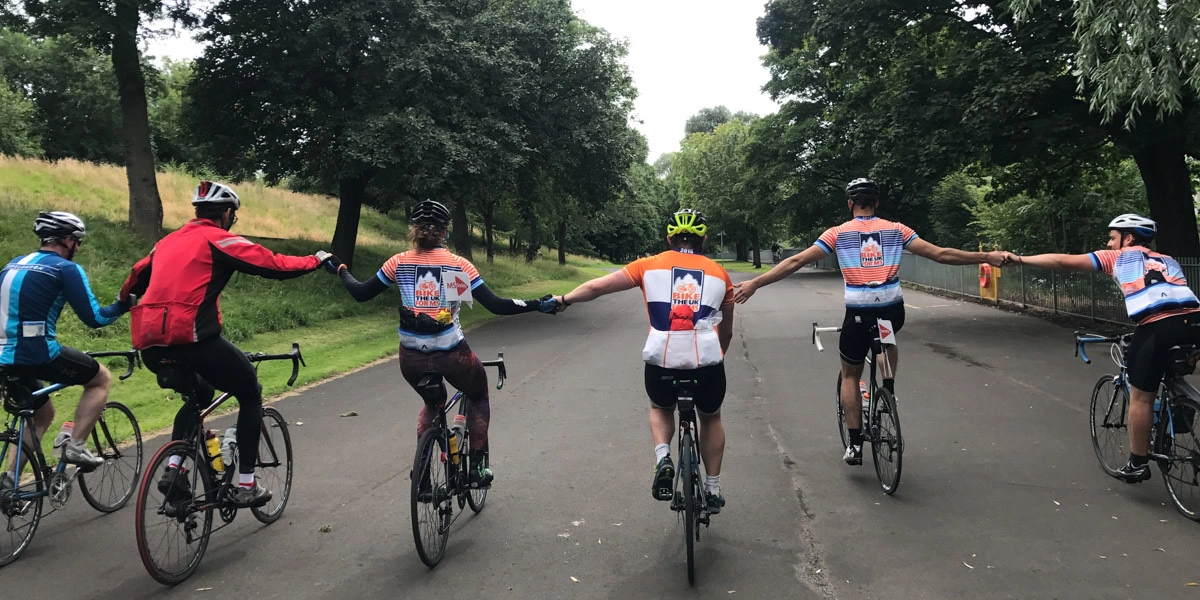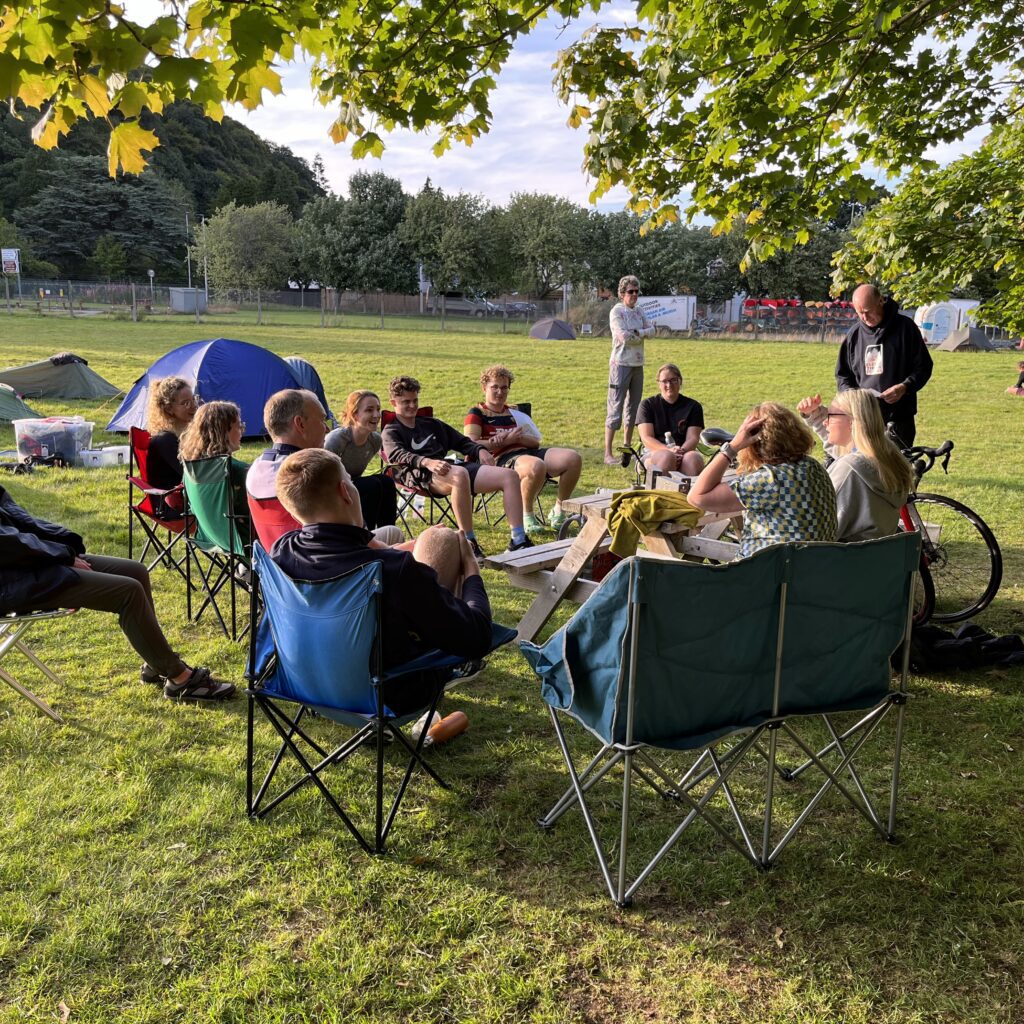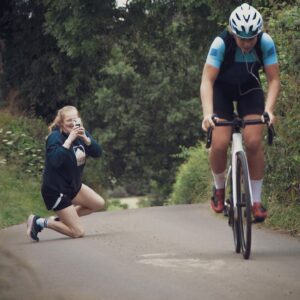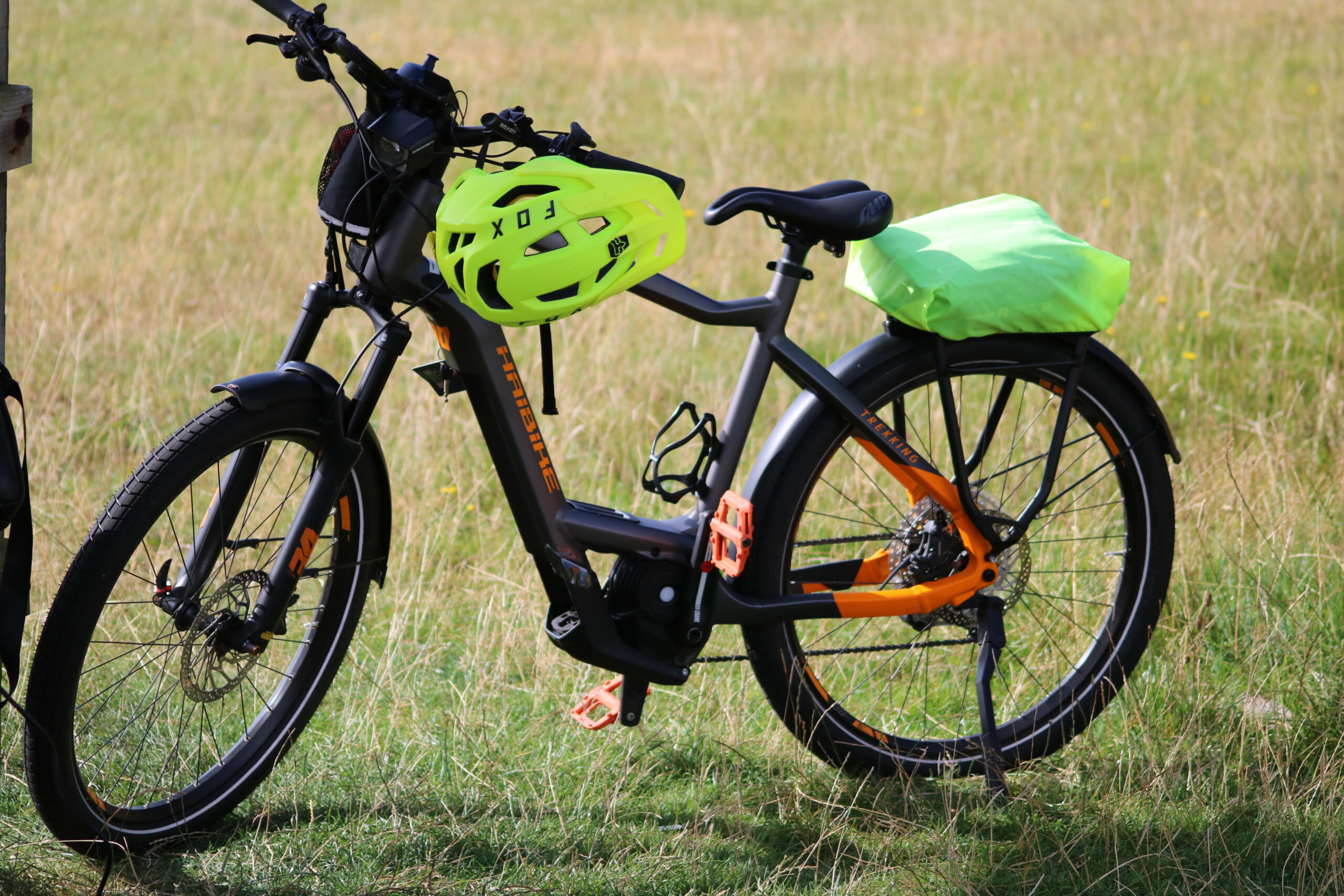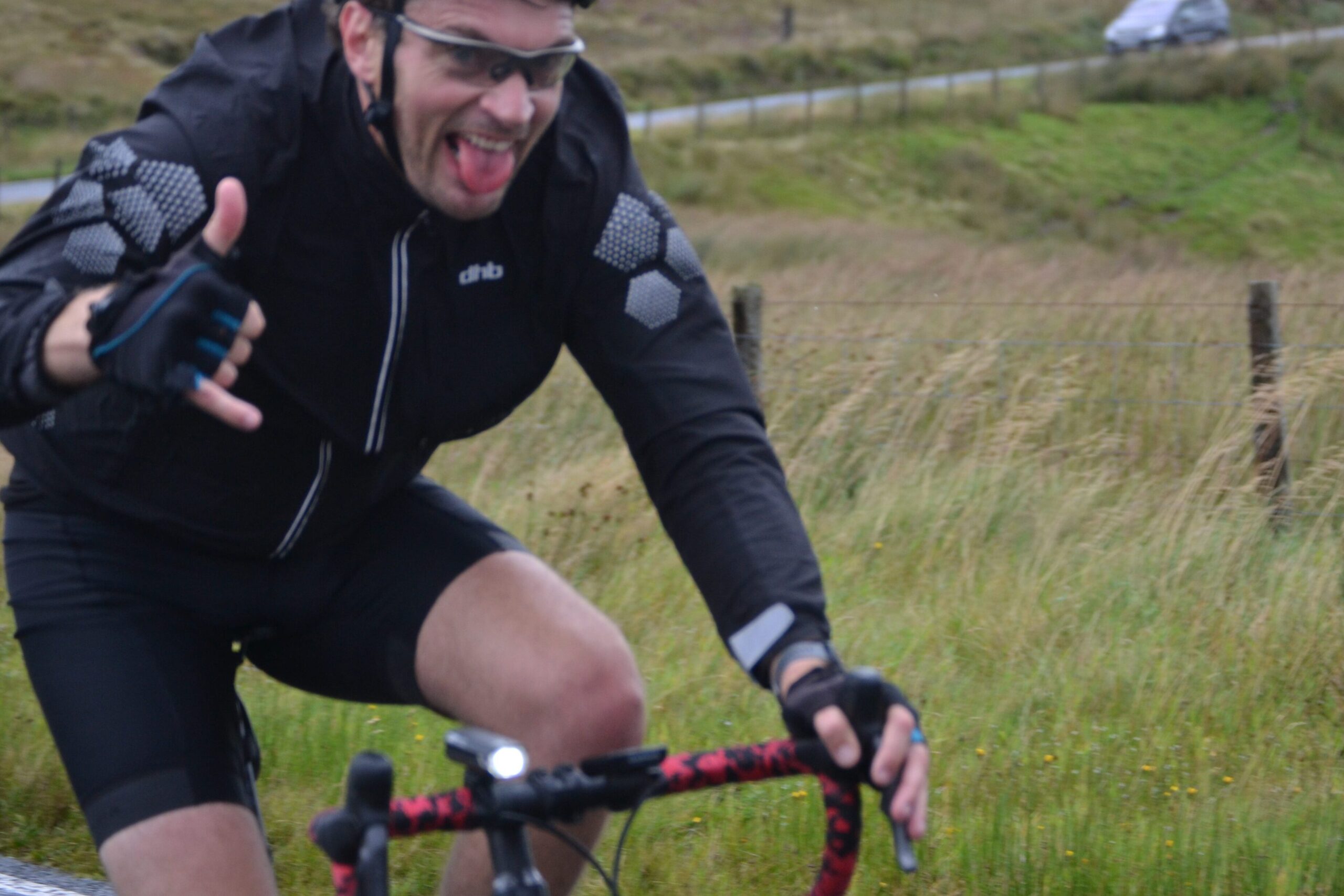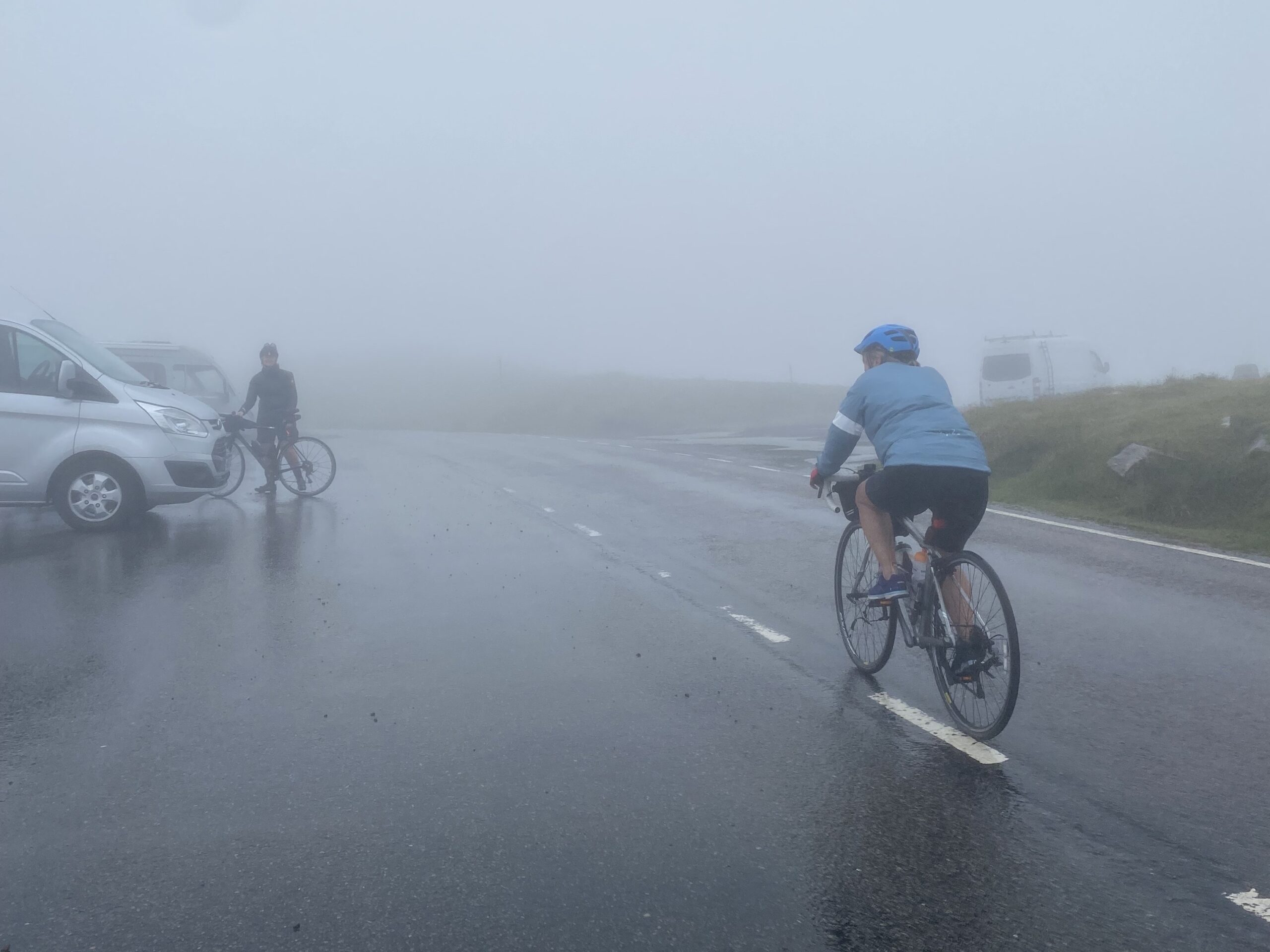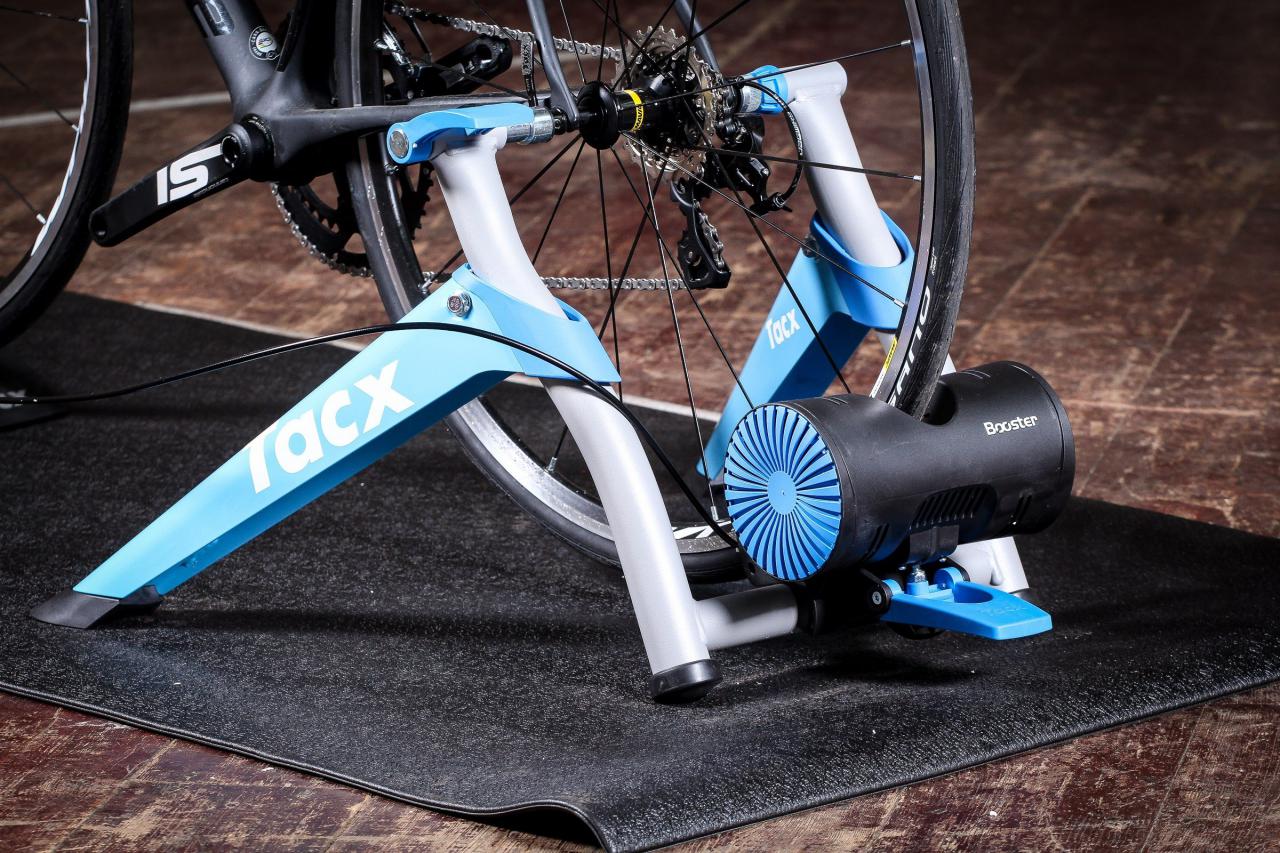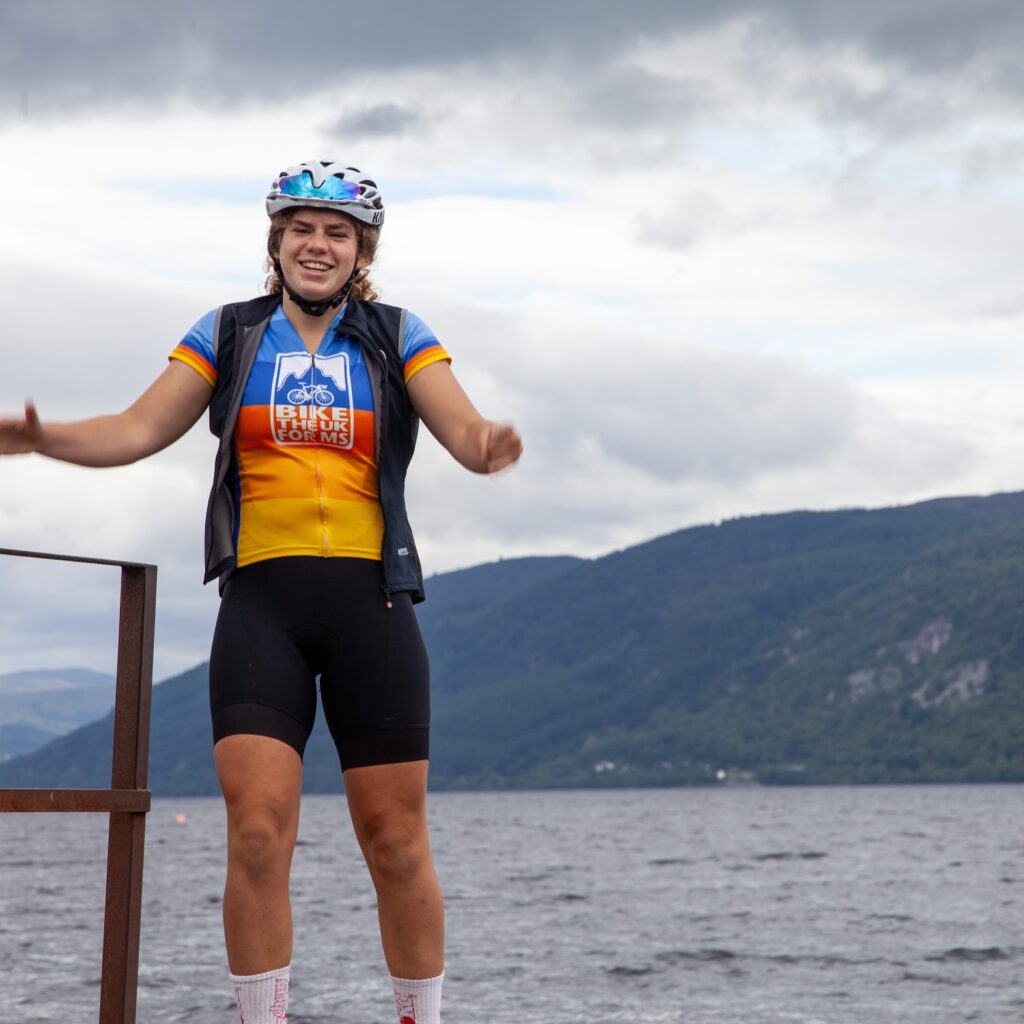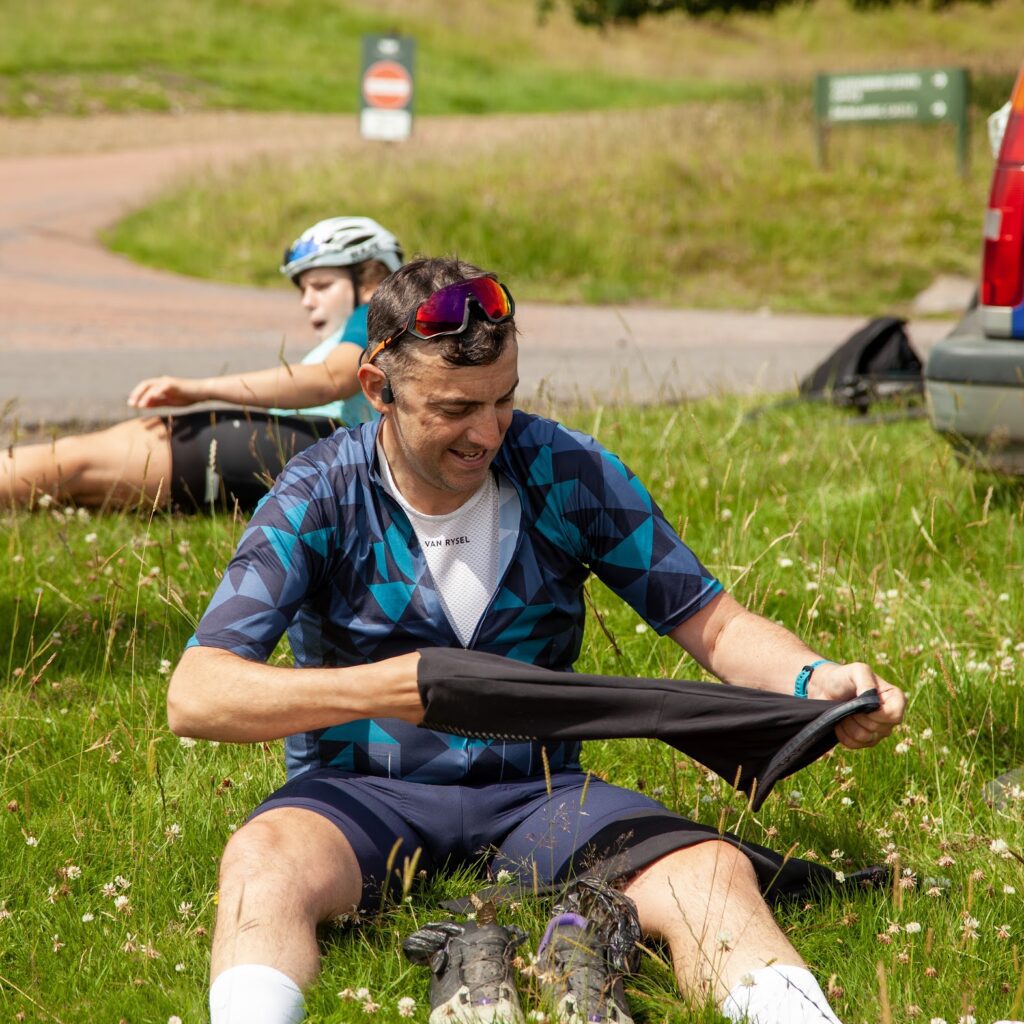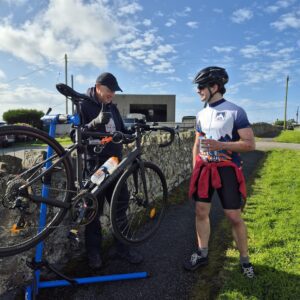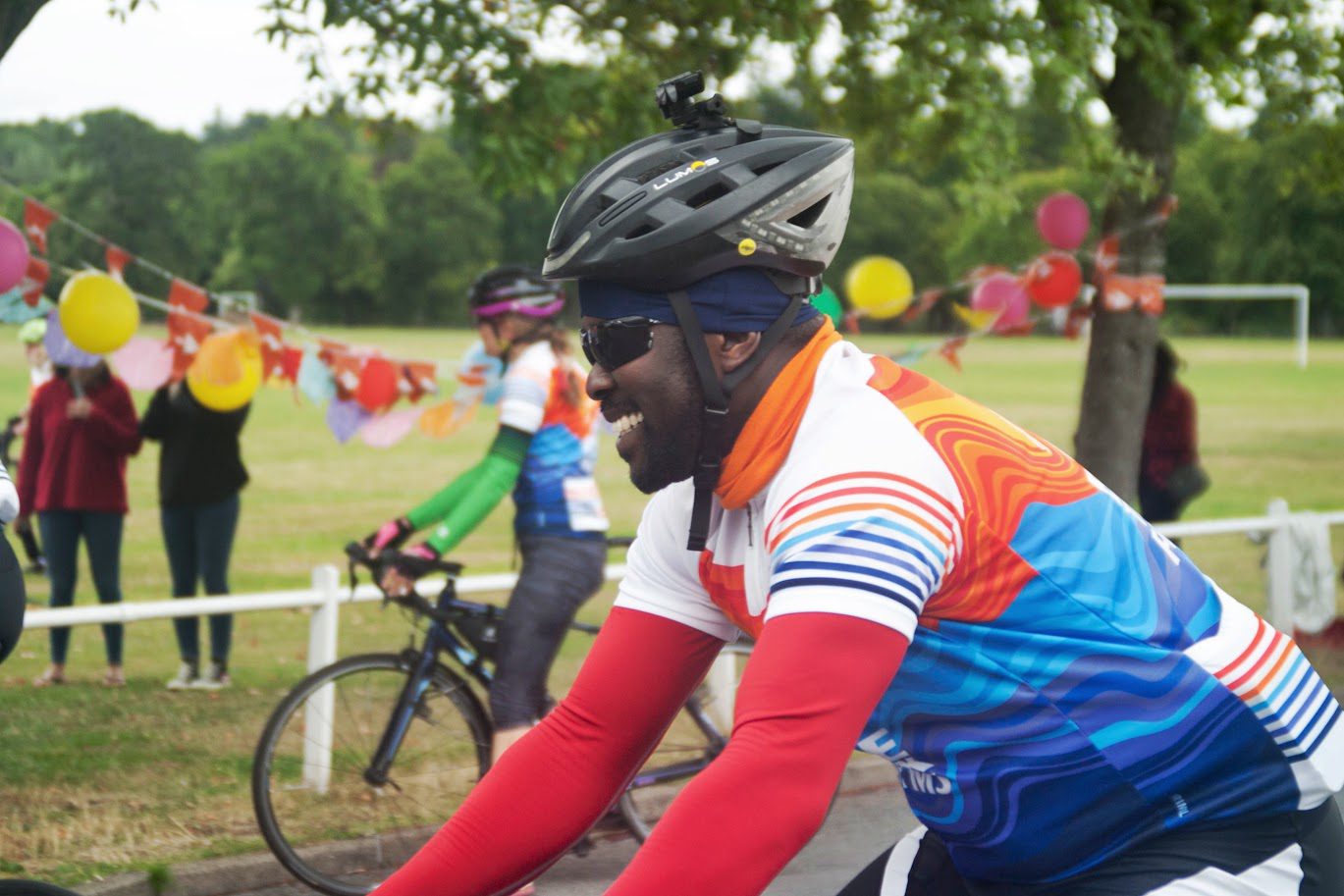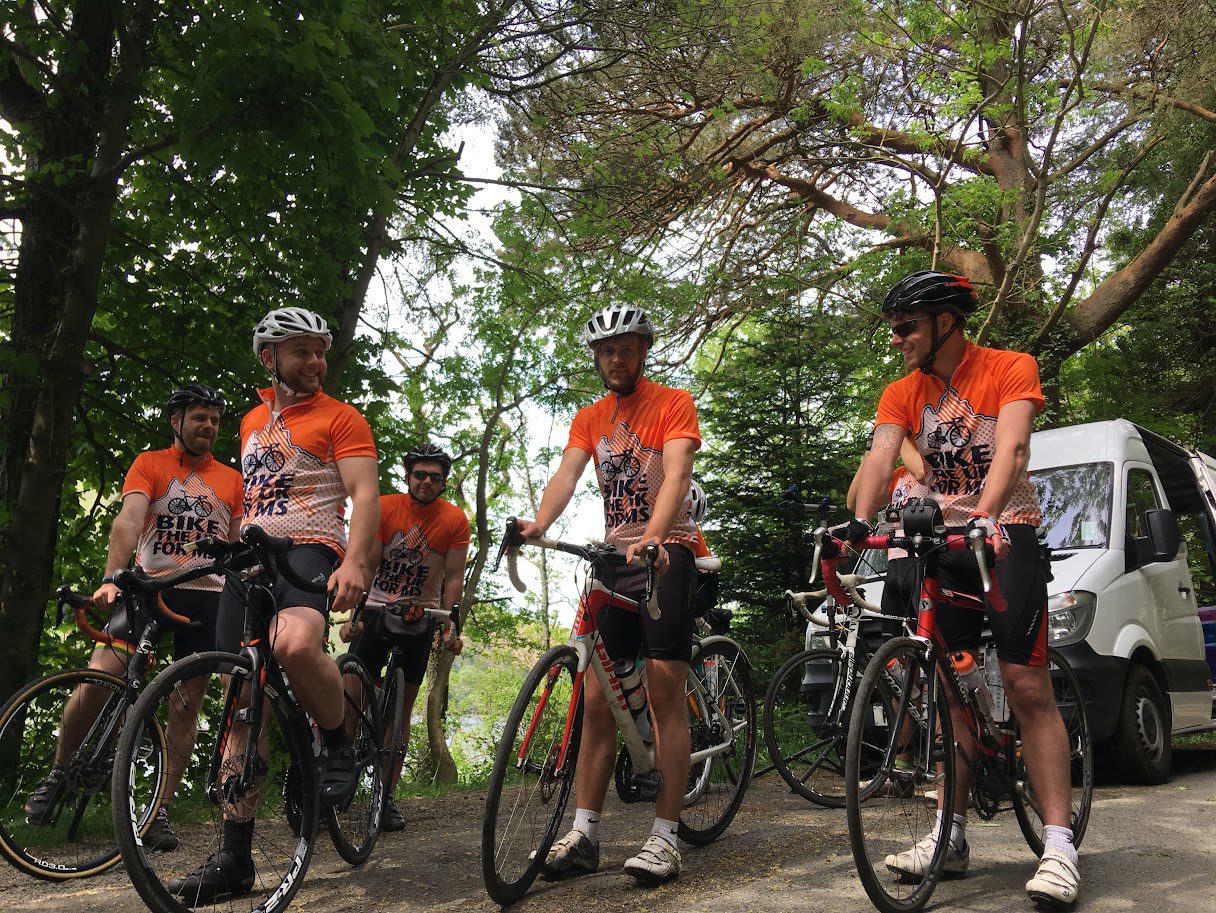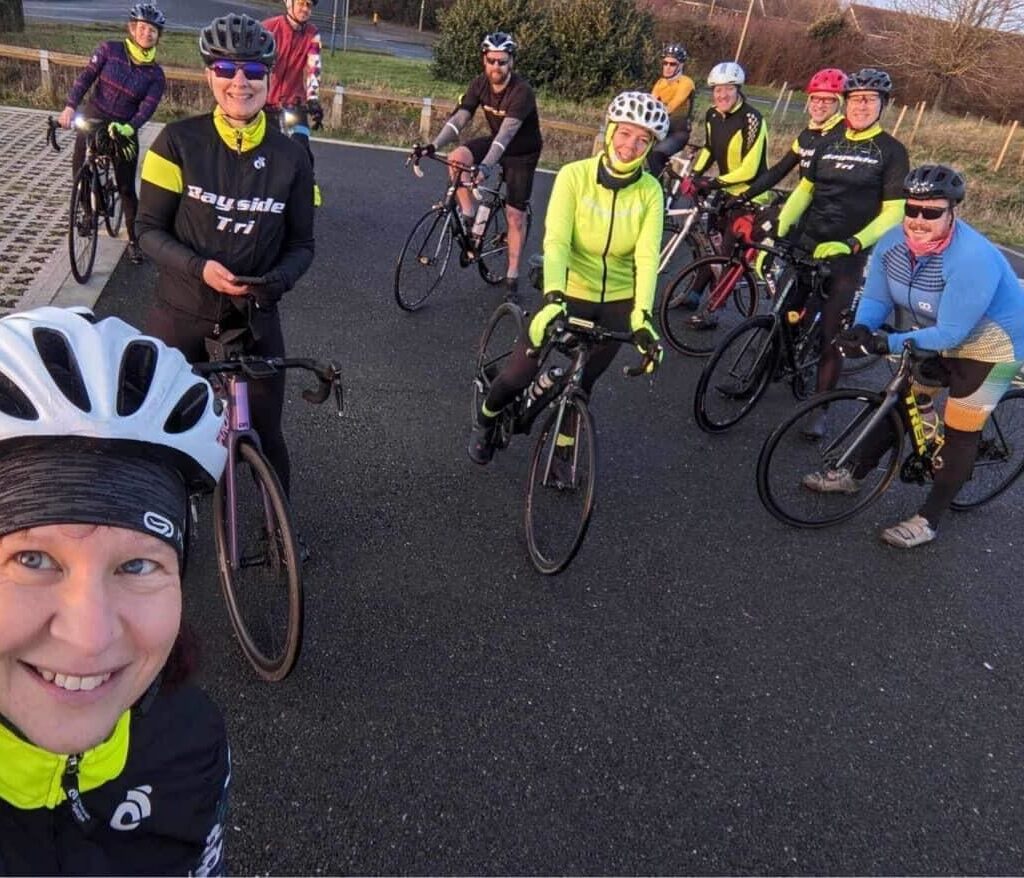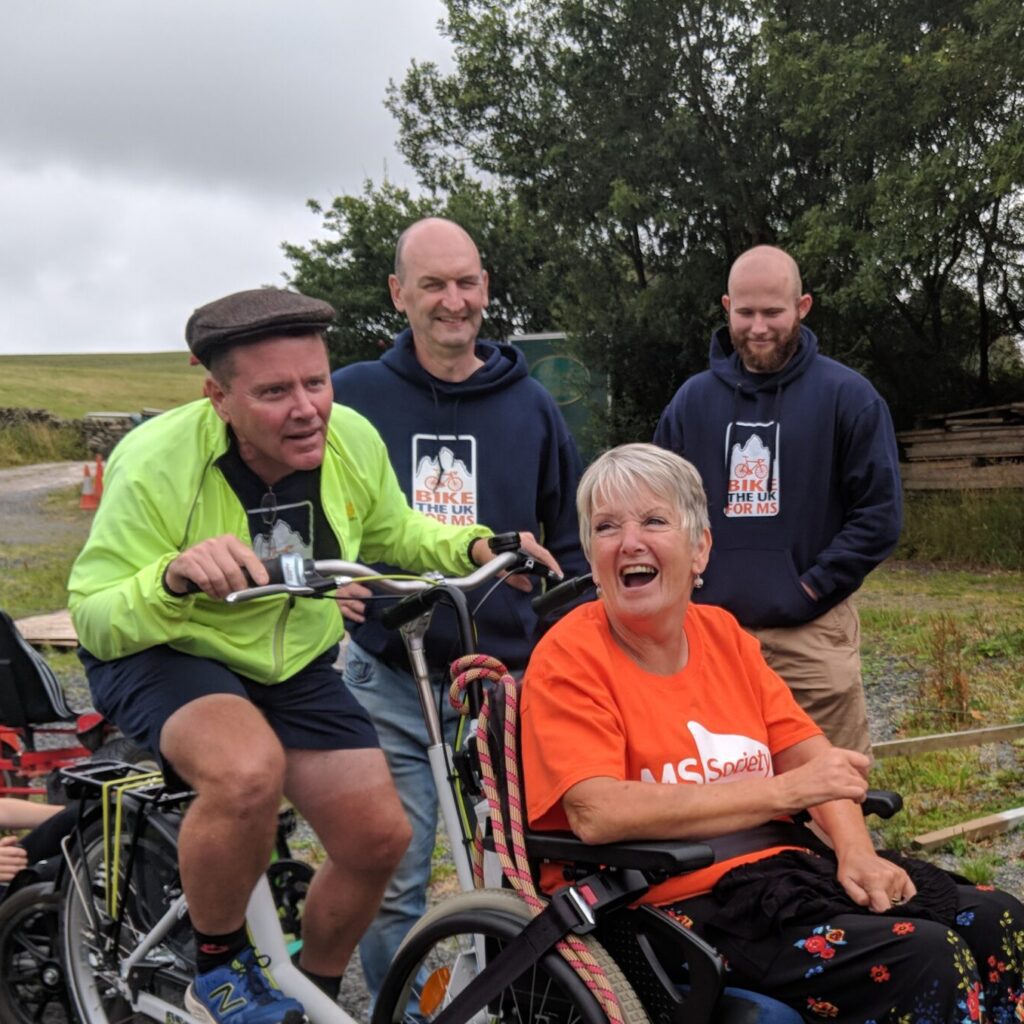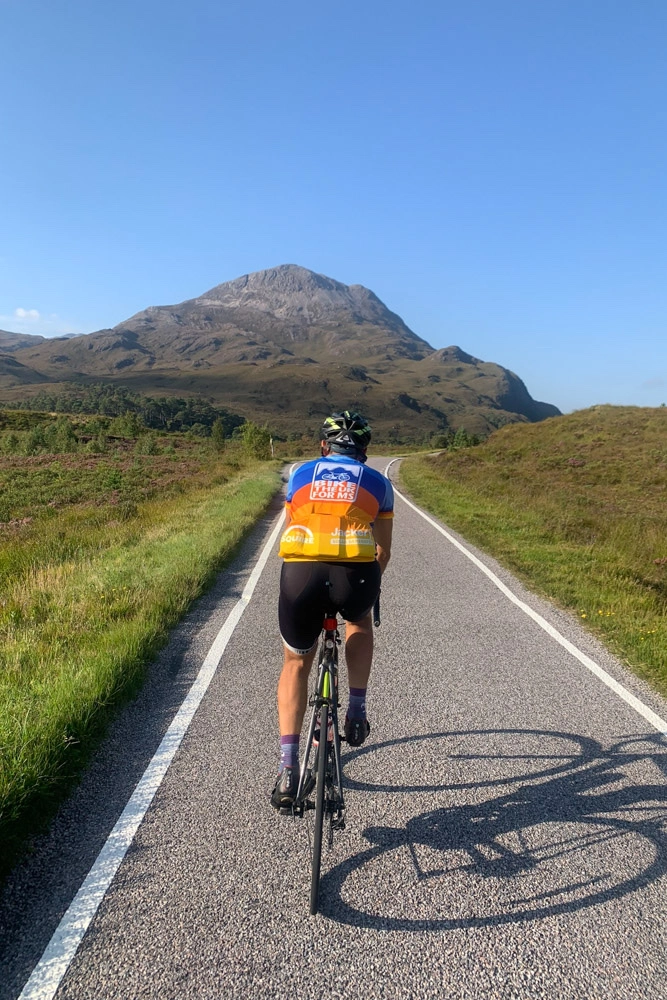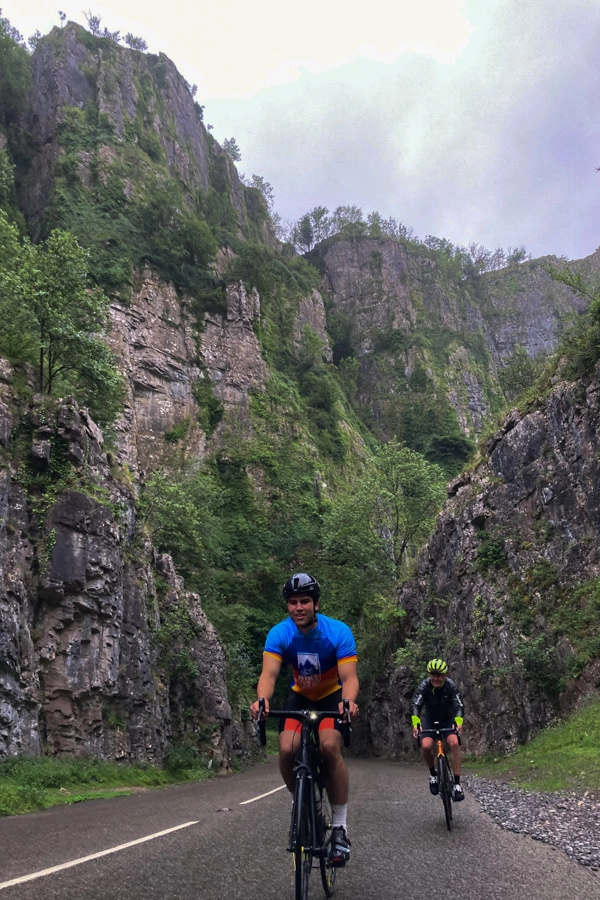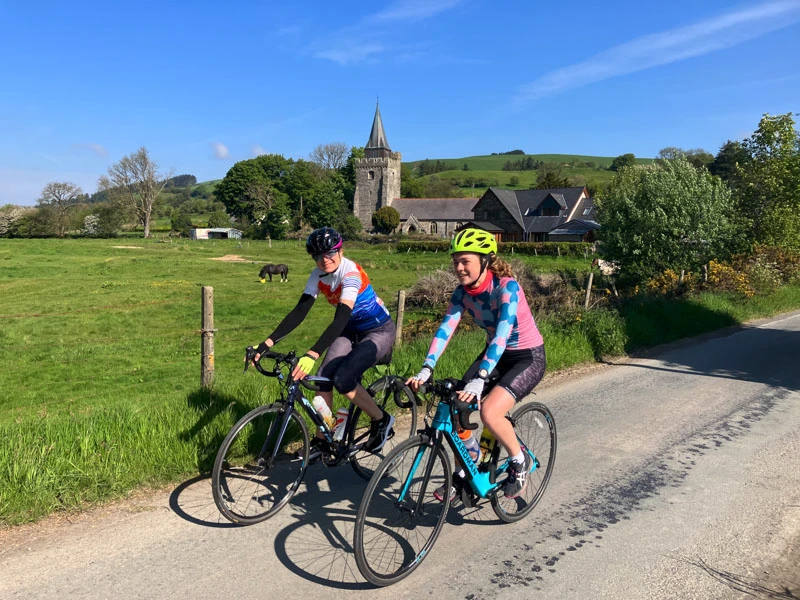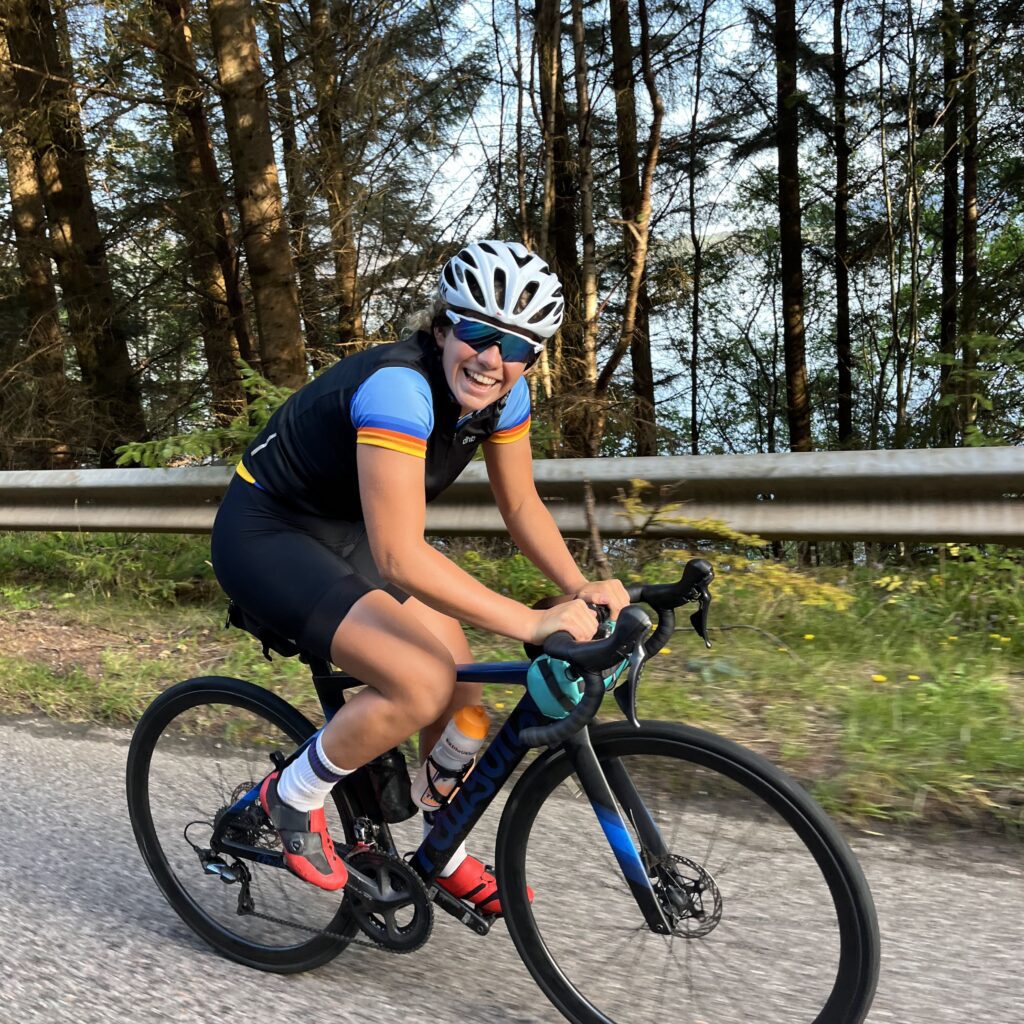A gentle start and a good job it was too!
The first part of my big day riding the King Alfred Way route took me from Reading down to Farnham. This part of the route featured a decent number of road sections on quiet country lanes as we left the urban area of Reading behind. A smattering of flat-ish and not-too-technical tracks dispersed amongst the lanes was a lovely way to start the ride. And a big relief for me I had packed my clipless mountain bike shoes but had forgotten that my flat pedals were still on the bike. Faced with either 100 miles in my trainers or the chance of picking up some SPD pedals in Farnham (at the cost of riding the first part of the ride precariously perched on the flat pedals in my cleated shoes) I decided the latter option would be less unpleasant.
With October mud lingering on some of the off-road sections and more rain forecast later on in the day I was pleased that this first section was not too climby or too technical and I was able to make it through without incident. The paved sections allowed the kilometres to tick by quickly and I was in Farnham for an early lunch with 60 km already ticked off.
Sandy sections and the climbing arrives
After creating trouble for myself through the morning, I was excited to get clipped into my pedals and to tackle the middle of the ride. Fuelled by sushi, crisps and sausage rolls from Sainsbury’s in Farnham I set off onto a really unique part of the route. The military training areas on the hills in this part of Surrey have a very sandy surface and the route twists and turns its way to make the most of these. It is hard to believe just how close to urban centres such as Guildford (not to mention London) you are as you Chris cross your way through the open landscape.
Things turn up another notch as you head towards the Devil‘s Punchbowl. A truly spectacular piece of the south of England’s landscape… or so I am told. The mist closed in as I toiled up the sustained climb to the top and stole any views down off the escarpment from me . It was still a beautifully tranquil and atmospheric setting for the middle part of my ride as the mist turned into a light drizzle.
After a brief pause to re-gather my legs at the top of the climb I headed down on a part of the ride that featured some road sections but also a spectacular sunken lane where the tree roots tower over you, never mind the trunks and branches. It was turning into a gloomy afternoon weatherwise but now, deep amongst the Earth, it felt like I was in a mystical land. Heading out through the now sustained drizzle into Liss for a bit of respite sitting on a wall by the train station – 90km done and reflecting that I still had a long way to go on my hundred mile plan itinerary.
The ratchet gets turned a few more times
The climbing was really now starting to pile up and as a result (alongside the reduced paved kilometres) the distance was ticking by more slowly. Or was that my glycogen reserves flagging? Nevertheless, the long descent through Queen Elizabeth Country Park in the close mist under the sodden trees was a super cool thrill ride. Especially as my glasses kept fogging up and I could barely see where I was going.
A short sign that I was feeling the distance where my first few unspectacular tumbles. A couple of occasions were a slippy surface combined with a steep gradient and tired legs left me to flop into a hedge or two as I ran out momentum. I will admit that this started to become frustrating, and I now realised how much having the Bike the UK for MS Rest Stop van on hand would be ideal. Nevertheless, it was time to climb the most significant challenge of the day: Butser Hill. Looming ahead of me up into the mist and beyond.
Low visibility in the clouds
I made a mental wager with myself at the bottom, gazing up at the fence line that led to what looked like the steepest section of all closer to the top. Would I make it to the gate before dismounting? How far would I get on the other side, up what looked (from the bottom) like a wall of grass? The answer was a pleasing surprise and suggested I still had some gas left in the tank: apart from a short 50 m or so on the steepest ramp I pedalled the whole way way up. Into what felt like very low clouds where the visibility was down to about 15 to 20 m.
It was very much evening by now (although the gloomy weather meant it had seemed like dusk for hours) but even in October there was still several hours of daylight left. As I crossed Old Winchester Hill, a place I have cycled many times in brighter weather, the rain really started to come down. This was perhaps the first time I was relieved I wasn’t on my cyclocross bike because having successfully descended the chalky soil in the dry several times I had heard about how slippy things can be in this part of the world when things are wet.
Getting dark
In the end, with the mental fatigue of my day’s riding so far, I decided to walk it anyway. Turns out the ‘cross bike probably would’ve been better. Onwards I headed, with more climbing. I now was racing to get as close to Winchester as possible before the light ran out. There were a couple of road sections left that I wanted to try and do before darkness fell, knowing that my lights would see me through but ideally I wanted to avoid having to get the head torch out of the bag.
In the end the head torch was more than needed…
My solo ride interrupted by several hundred motorsport fans
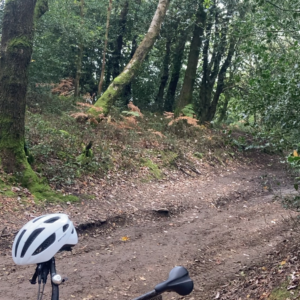
As I made my way over the hills towards Winchester it was clear there was a huge bright light on top of one of the horizons. Some technical or manufacturing facility, I assumed. My route of ancient byways took me ever closer to the beacon on the hill. It turned out that I would be surrounded by the headlights and tail lights of the mass exodus of motorcycle racers leaving their weekend events, just as I happen to be peddling by. A bit annoying to be stuck in a traffic jam whilst riding on a byway, and it also necessitated me rigging my lights up earlier than otherwise needed so I could be seen amongst the headlights.
The final bit of Jeopardy added to my day was a raft of train cancellations. I had been keeping an eye on things throughout the ride, albeit with very few options to change things as I went. There was a single train showing as running that evening, that would get me back home from Winchester. Despite being equipped for a ride into the darkness, I now have a very strict deadline to arrive at the train station. As a result I began assessing my options regarding my route choices.
I could stick to the mainly off-road routes which meandered its way across the hills to pick out the best rights of way. Or would it be better to stick myself on the roads, trust my lights to keep me visible and make a bee line for the city centre? In the end, I decided that I had enough time in hand to stick to the off-road routes and I preferred being able to ride in the knowledge that I was minimising the amount of time spent on the road whilst in the dark.
A wrong turn…
That judgement however had not accounted for navigational issues. Diligently following the GPX on my watch, I had only ever had minor issues all day despite the web of bridleways, byways and lanes I was following. But in the dark it can be a little harder to spot the small entrances and exits you need in order to thread your way onto these paths. As I approached a turn in the darkness, it looked like I was going to follow the edge of a field to head down the hill. About a kilometre later, as the way in front of me was guarded by a bristling bramble bush, it became apparent that I was on the wrong side of the hedge that I had been following along the edge of the field. What was worse is that I had followed this hedge for a whole kilometre, all downhill.
To return to where I had left the path would be adding distance, time and more climbing which I could ill afford. Fortunately for me, as I cast my head torch around in the darkness approaching the corner of the field, it appears I was not the first to make this mistake. A bike-sized gap had been punched low in the hedge on my right. Thrilled to have avoided having to retrace my steps I shoved my bike and myself through this hole in the hedge to find the byway I was supposed to be riding on. Onward I went towards Winchester, with several kilometres less potential distance on hand and more minutes that would help to ensure I would catch the train.
Cutting it close!
Despite a brief wrong turn on Winchester‘s one-way system which led me to run my bike 500 m or so to avoid having to go the long way round, I cruised up the ramp into Winchester stations car park with a whole six minutes to spare. It had been an epic adventure of the like which I had hadn’t taken on in nearly a decade or so. When I was a student many cycling trips would end up hungry and tired at a train station to take me home. I’m glad I wasn’t having to find a last-minute hotel for the night.
What Bike to bring
I completed roughly the first two days of our planned King Alfred’s Way trip in May during my ride. Personally, I would have preferred to be on my cyclocross bike than the hardtail mountain bike I rode on. I chose the mountain bike so I would have a wider range of low gears for the climbing and this definitely was super helpful in the main climbing section of the ride. However, I would say that the momentum and speed lost by being on a mountain bike compared to a cross bike was not worth the trade-off. With the exception of the descent of old Winchester Hill (which I walked anyway) there were no technical sections that I wouldn’t have been confident to ride on my cross bike, even on a wet day like the one I rode.
I am a reasonably confident rider on my ‘cross bike albeit far from a proficient mountain biker. So I would say that if you consider yourself a confident off-road rider, a cyclocross or gravel bike will be more than sufficient. I have spoken to number of people who have ridden the route on a gravel bike in varied conditions and they said it was the best tool for the job. If I was asked by someone who was less confident riding in an off-road setting, I would recommend a hardtail mountain bike. You will be slower covering the distance but less likely to find lots of sections where you feel you have to walk. If you are riding an e-mountain bike, then the whole route will fly by and will be a complete blast.






